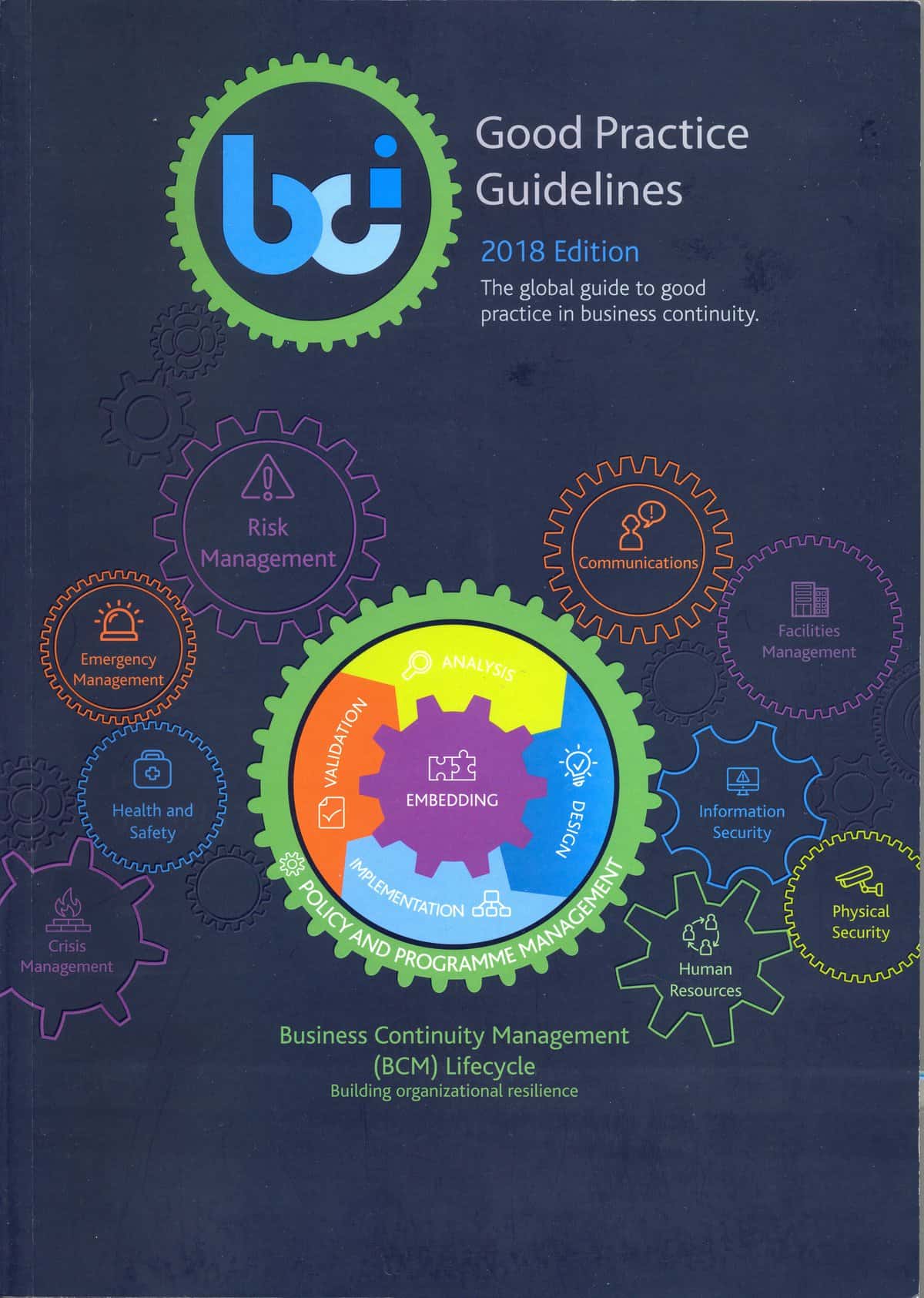Published by The Business Continuity Institute
What changed
This edition of the Good Practice Guidelines – 2018 Edition – The BCI Organization differs according to its own saying in numerous ways from the 2013 edition. Some of those that stayed with me are:
– More collaboration of the BCM employees with other employees in other management disciplines.
– Supply chain was integrated more into the story.
– More links are being made to ISO standards.
– Risk assessment has gained importance.
Some things changed
There are other things that have changed in this Good Practice Guidelines, which are interesting:
– Throughout the work, the link is regularly made to information security, but without referring to the ISO 27K series.
– The BIA is still a 4-tuple, but the book changes the mandatory character to “use what you need”
– The BCI makes a distinction between crisis management and incident management.
– There is a better explanation for strategic, tactical and operational plans in times of crisis. However, without saying that the choice is also important as a function of what one needs. This piece remained sharply separated.
– There are beautiful tables here and there with more explanation of what the authors mean, such as the table with specific core competences and management skills that the BCM responsible needs, according to the 6 professional practices.
The book gives extensive attention to PP6: ‘Validation’. Practicing the operation of the BC program of the organization is very important as the cornerstone of the cycle to its restart.
Conclusions
In summary, we can state that the book is important for the beginners in BCM, but also for the advanced as a reference book.
What I personally regret that lacks is a ‘further reading’ for each chapter. For further reading I have the feeling that it somewhat leaves the interested parties hungry. But then there is the URL of ‘The Business Continuity Institute’ where you can find more information. (www.thebci.org).

